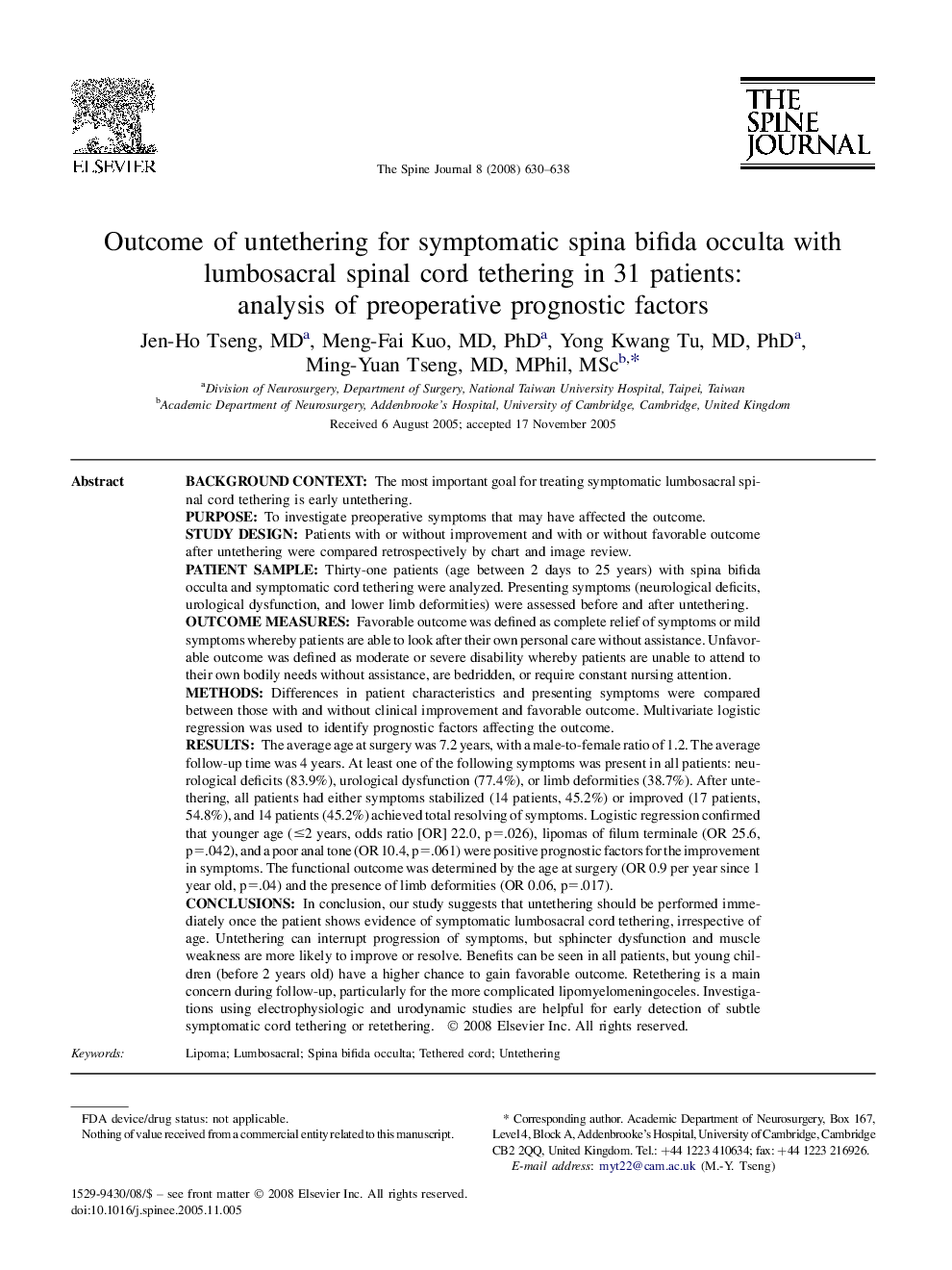| کد مقاله | کد نشریه | سال انتشار | مقاله انگلیسی | نسخه تمام متن |
|---|---|---|---|---|
| 4100188 | 1268674 | 2008 | 9 صفحه PDF | دانلود رایگان |

Background contextThe most important goal for treating symptomatic lumbosacral spinal cord tethering is early untethering.PurposeTo investigate preoperative symptoms that may have affected the outcome.Study designPatients with or without improvement and with or without favorable outcome after untethering were compared retrospectively by chart and image review.Patient sampleThirty-one patients (age between 2 days to 25 years) with spina bifida occulta and symptomatic cord tethering were analyzed. Presenting symptoms (neurological deficits, urological dysfunction, and lower limb deformities) were assessed before and after untethering.Outcome measuresFavorable outcome was defined as complete relief of symptoms or mild symptoms whereby patients are able to look after their own personal care without assistance. Unfavorable outcome was defined as moderate or severe disability whereby patients are unable to attend to their own bodily needs without assistance, are bedridden, or require constant nursing attention.MethodsDifferences in patient characteristics and presenting symptoms were compared between those with and without clinical improvement and favorable outcome. Multivariate logistic regression was used to identify prognostic factors affecting the outcome.ResultsThe average age at surgery was 7.2 years, with a male-to-female ratio of 1.2. The average follow-up time was 4 years. At least one of the following symptoms was present in all patients: neurological deficits (83.9%), urological dysfunction (77.4%), or limb deformities (38.7%). After untethering, all patients had either symptoms stabilized (14 patients, 45.2%) or improved (17 patients, 54.8%), and 14 patients (45.2%) achieved total resolving of symptoms. Logistic regression confirmed that younger age (≤2 years, odds ratio [OR] 22.0, p=.026), lipomas of filum terminale (OR 25.6, p=.042), and a poor anal tone (OR 10.4, p=.061) were positive prognostic factors for the improvement in symptoms. The functional outcome was determined by the age at surgery (OR 0.9 per year since 1 year old, p=.04) and the presence of limb deformities (OR 0.06, p=.017).ConclusionsIn conclusion, our study suggests that untethering should be performed immediately once the patient shows evidence of symptomatic lumbosacral cord tethering, irrespective of age. Untethering can interrupt progression of symptoms, but sphincter dysfunction and muscle weakness are more likely to improve or resolve. Benefits can be seen in all patients, but young children (before 2 years old) have a higher chance to gain favorable outcome. Retethering is a main concern during follow-up, particularly for the more complicated lipomyelomeningoceles. Investigations using electrophysiologic and urodynamic studies are helpful for early detection of subtle symptomatic cord tethering or retethering.
Journal: The Spine Journal - Volume 8, Issue 4, July–August 2008, Pages 630–638